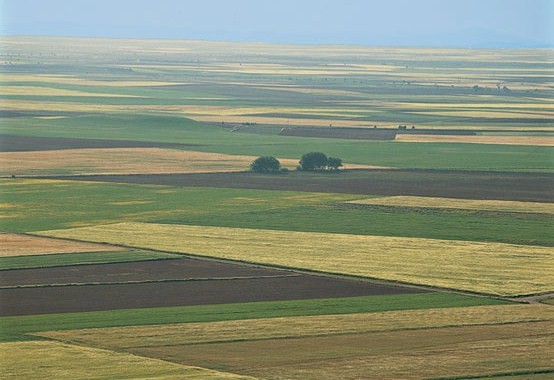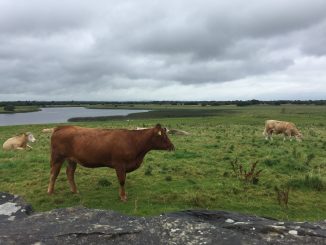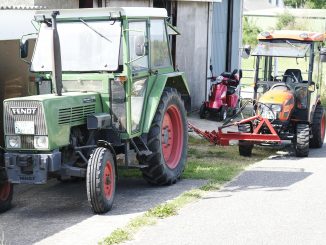
If agri-food is anything to go by, we are still, it seems, quite far from a Europe by and for its citizens. Cast your mind back to the heady days of October 2011. Arc2020 was quite young then, fresh faced and optimistic, when when EU Agriculture Commissioner Dacian Ciolos proposed a new partnership between Europe and its farmers.
Greening was to be centre stage in this bright new future. 30 per cent of the direct payments budget was for ‘greening’ the CAP. In other words, it wasn’t about options and the smaller Pillar II – all farmers had to do their bit.
This meant maintaining permanent grasslands, crop diversity and rotation for arable farmers and the designation of 7 per cent of farmland as ecological focus areas (EFAs).
Its worth noting that EFAs were to be different to set-aside, as this excellent post from Jack Thurson in 2011 shows. Set-aside was about curbing overproduction, whereas EFAs were to be about eco and agri services.
EFAs, he says, based on a Swiss policy, aims at “reversing the decline in farmland biodiversity, the loss of pollinating insects and farmland bird populations, reducing soil erosion and water pollution, all of which are known to be consequences of intensive agricultural production. There are aesthetic and quality of life benefits from the preservation of a ‘pastoral countryside’”
Its worth having a look at this presentation from Pierre Bascau of the EU Commisison’s DG AGRI on the Greening of CAP (and plugging in the headphones, while turning on canned laughter/funeral music as preferred). In it he says “different % for EFA were analysed The 7% figure was found balanced in terms of both economic and environmental effects”.
However using a false paradigm, as though the agri-food system actually functioned sensibly to try to feed the world, business-as-usual began to chip away at greening in general and EFAs in particular.
Crop rotation became mere crop diversification; Irish presidency introduces weighting into EFAs, which don’t seem to make much ecological sense. By March 2013, and a Parliament vote, EFAs were being reduced. By April 2013 the Euroepan Environmental Bureau were very worried indeed.
J Christophe Bureau outlines many of the negatives of the destruction of the EFA in his April 2013 post on CAPreform.eu. There he points to just some of that month’s watering down of the EFA: “the conditions to obtain the Green Payment have themselves been neutered by the various amendments of the Commission’s text proposed by both the COMAGRI and the Agricultural Council. These amendments look like technicalities, but in practice, they water down considerably the EFA requirements (3). With the COMAGRI amendments, permanent crops would be removed from the EFA constraint; some elements that are not part of the arable land could be counted against the requirement; land planted with nitrogen fixing crops would be part of the EFA; EFAs could be used for production provided that no chemical input were used. Farms below the size of 10 hectares would be exempted from the obligation of EFAs; rather than imposing that EFA cover 7% “of their eligible hectares as defined in Article 25, excluding areas under permanent grassland” to obtain the Green Payment as stated in the Commission proposal, the COMAGRI voted for 3% obligation, with a move to 5% in from 2016. The COMAGRI also included some possibilities for Member States to implement 3% EFA at the regional level, which could help in building adjacent EFAs but might also lead to count as EFAs some fallows that exist “naturally” in some particular areas. “
He also adds that “when it drafted the 7% EFA requirement proposal, the Commission estimated that at least 3% of the land on almost any farm qualifies as EFA, once existing buffer strips, field borders and field sections where tractors can hardly access were all taken into account.”
And so it continued, even up to early 2014. Even in the Delegated Acts stage, there has been watering down (or, more aptly, contamination) of what is left of the ecological in EFAs.
At least two more phases of EFA destruction happened even since the move away from 7%. We first spotted in November that pesticides and fertilizers might be allowable in EFAs. (Note for legislators and agri=policy makers: ‘icide’ means “killing of”). Not only has this transpired, the slight progress in weighting elements within the EFA has been partially reversed. So instead of genuinely positive agri-environmental features being incentivised, the gap has narrowed and now growing protein crops, which shouldn’t even be in EFAs in the first place, are more attractive than even was planned in mid March. So as and from early April, we’ve seen an extreme CAP-itulation. Another one. This was all thanks to a concerted push by elements of the centre-right European People’s Party, as well as some far-right politicians.
As we pointed out in our press statement April 2nd “an unnecessary ‘special declaration’ issued by the Commission this Wednesday (April 2), it was announced that: “As far as the production of nitrogen-fixing crops on EFA is concerned, the Commission has decided to adjust the coefficient in the Annex (…) such that 1 hectare of a nitrogen-fixing crop such as alfalfa, clover or lupins can be equivalent to 0.7 ha of EFA (rather than 0.3 ha in the original text) (emphasis added),” without any binding restrictions on pesticides use on those crops.”
Will the powers that be find yet another way to water down EFAs? They have certainly been creative thus far. Its important to stay vigilant, and to work at member state level to encourage agri-environmental approaches are taken up: the general De-Europeanisation of the CAP at least means that at Member State level, there is still lots to play for. The EIP too offers up lots of potential for positive progress.
Maybe its all about perspective. Perhaps if we didn’t expect so much, with the promise of 2011 and real reform, we’d see things a little differently now. What we have is some sort of multifaceted progress mixed with plenty of regression. What we need is an agro-ecological continent. But when you are given a chance to dream, you don’t easily forget the vision. Let’s push on and create this.






2 Trackbacks / Pingbacks
Comments are closed.